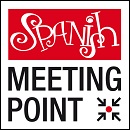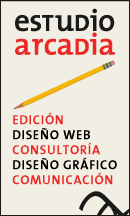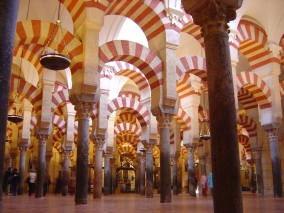Spanish schools and accommodation to study Spanish in Spain
Recent posts
Last schools
introduced
introduced
1 Accommodation

1 Spanish schools

Learning Spanish in Cordoba. The tourist guide to study your Spanish course.
Study Spanish in Cordoba and learn about Spanish history from this southern city in Spain. You can learn how Cordoba means Arabic and Catholic religions coming together at present times, as its historic city centre witnessed Moors against Christians battles taking place for centuries.
General Information. 328,000 inhabitants. 400 kilometres to the south of Madrid. It belongs to the Autonomous Community of Andalusia. Cordoba is located on the banks of the Guadalquivir River and at the foot of the Sierra Morena. The old quarter still has remains from what used to be the capital of Further Spain during the Roman expansion and then the capital of the Arab caliphate of Al-Andalus. Owing to its rich historical and artistic heritage, Cordoba is an important tourist centre; other important sectors are agriculture and industry, especially activities related to the manufacture of gold and silver jewellery. The University of Cordoba was inaugurated in 1972 and each year caters for around 21,000 students. Cordoba is a very attractive place to study Spanish with some language schools offering a wide range of courses.
Surrounding Areas. Medina Azahara and the ruins of its palace, which are of great archaeological interest. The Sierra Norte, with the Montoro Valley and the Sierra de Almodóvar, with numerous lookout points. In the valleys of the Sierra Sur, you will find the following towns and villages: Moriles (61 kilometres) and Montilla (45 kilometres), which are famous for their good wines; Cabra (82 kilometres) and Priego (103 kilometres), known for their wealth of monuments. Within easy reach of the city is the forest park Los Villares (120 kilometres).
World Heritage Site. Cordoba's old quarter was declared a UNESCO World Heritage Site in 1984. It is the largest urban area in the world to enjoy this distinction. The Cathedral, and former Mosque, has also been awarded the same status.
Main Sights. Cordoba boasts a wealth of monuments and historical remains from past ages. It has the largest old quarter in Europe, which contains the famous Mezquita de Córdoba. This famous Mosque began to be built in 786 on the site of the Visigothic basilica of San Vicente Mártir. Other important monuments are: the Bridge, the Temple and Roman Theatre, the Roman Mausoleum, the Colonial Forum, the Forum Adiectum, the Amphitheatre, the remains of the palace of the Emperor Maximian and the archaeological site of Cercadilla. One of the emblematic neighbourhoods of Cordoba is the Jewish Quarter (La Judería), where you will find the Synagogue and the House of Sefarad. The historical urban area is well conserved. You can also visit the seven bridges, the most noteworthy being the Puente Romano, the Puente de San Rafael and the Puente de Andalucía. Cordoba has many gardens and parks such as the Jardines de la Victoria; the Jardines de la Agricultura, which are situated between the Jardines de la Victoria and the Paseo de Córdoba; the Parque de Miraflores, on the bank of the Guadalquivir River; the Parque Cruz Conde, or the Paseo de Córdoba, which has many fountains. The monuments are a major attraction for the many students who decide to study Spanish in Cordoba.
Culture. The main festivals and cultural events are the Medieval Market (January), the Blues Festival "Cordoba City" (Ciudad de Córdoba), the ‘White Flamenco Night in Cordoba' (Noche Blanca del Flamenco en Córdoba) in June and the International Guitar Festival (Festival Internacional de la Guitarra) in July. There are almost as many museums and theatres as there are monuments. The most worthy of mention are the Archaeological and Ethnological Museum of Cordoba, the Julio Romero de Torres Museum, the Provincial Fine Arts Museum (Museo Provincial de Bellas Artes), the Leather Museum (Casa Museo Arte sobre Piel), the Gran Teatro de Córdoba, and the Teatro de la Axerquía. Other places of interest include the old royal bath house (Baños Califales) and the Botanical Garden (Jardín Botánico de Córdoba).
Shopping. The shopping area is concentrated in the old quarter. There are also several shopping centres - La Sierra, Zahira, Zoco, El Arcángel, Guadalquivir and El Tablero - and two branches of El Corte Inglés, Spain's premier department store chain, one in Avenida Ronda de los Tejares and the other in Calle Jesús María.
Gastronomy. To sample tapas you should go to the old quarter and the city centre. The gastronomy of Cordoba is influenced by all the different cultures that have passed through the city and is based on fresh country produce from the surrounding fertile plain. Olive oil is the most important product, although it is also worth highlighting rice, spinach, aubergines, artichokes and all kind of herbs and spices, such as oregano, mint and tarragon. There are good cheeses and hams in the area of Los Pedroches and excellent white wines in Montilla and Moriles. The typical dishes are rabo de toro (bull's tail), salmorejo (a cold and creamy bread and tomato soup), flamenquines (pork rolls fried in bread crumbs) and dishes prepared from wild game.
Sports. You can play or learn almost any sport here. Sports installations include the Palacio Municipal de Deportes Vista Alegre, the Polideportivo El Cordobés, the Estadio Nuevo Arcángel and numerous municipal swimming pools. Cordoba also has two golf courses, Club de Campo de Córdoba and Club de Golf de Pozoblanco.
Fiestas. The most important is the ‘Fair of Our Lady of Health' (Feria de Nuestra Señora de la Salud) in the last week in May, with the traditional marquees or casetas offering different styles of entertainment to their visitors such as salsa and flamenco-style dancing. Holy Week also stands out, as do: the ‘Battle of the Flowers' (Batalla de las Flores) in April, where flowers are thrown back and forth between a parade of decorated floats and the waiting crowds; the ‘May Crosses' (Cruces de Mayo), when crosses decorated with flowers are placed in the main streets of Cordoba; the ‘Courtyards and Patios Festival and Contest' (Festival y Concurso Popular de Patios) in May, where private houses decorate their patios and courtyards with flowers and open them to the public; and the ‘Wine-Tasting Festival' (Fiesta de la Cata) in May, when all the bodegas in Cordoba get together and offer their best wines for tasting.
Transport. It is easy to get from Cordoba to other Spanish cities by train or by using the various coach services. The AVE, the Spanish high speed train, links the city to Madrid, Seville, Málaga and Granada.
Nightlife. Students who decide to study Spanish in Cordoba will discover a very active nightlife. The nightlife in Cordoba is divided into different areas: Vial Norte, the Centre, Llanos del Pretorio and the Town Hall (Ayuntamiento) area. There is a wide range of establishments with live music as well as some tablaos, such as La Bulería or El Cardenal, which offer flamenco shows. One of the most well-known discotheques is Qu, while Metro caters for a gay clientele.
General Information. 328,000 inhabitants. 400 kilometres to the south of Madrid. It belongs to the Autonomous Community of Andalusia. Cordoba is located on the banks of the Guadalquivir River and at the foot of the Sierra Morena. The old quarter still has remains from what used to be the capital of Further Spain during the Roman expansion and then the capital of the Arab caliphate of Al-Andalus. Owing to its rich historical and artistic heritage, Cordoba is an important tourist centre; other important sectors are agriculture and industry, especially activities related to the manufacture of gold and silver jewellery. The University of Cordoba was inaugurated in 1972 and each year caters for around 21,000 students. Cordoba is a very attractive place to study Spanish with some language schools offering a wide range of courses.
Surrounding Areas. Medina Azahara and the ruins of its palace, which are of great archaeological interest. The Sierra Norte, with the Montoro Valley and the Sierra de Almodóvar, with numerous lookout points. In the valleys of the Sierra Sur, you will find the following towns and villages: Moriles (61 kilometres) and Montilla (45 kilometres), which are famous for their good wines; Cabra (82 kilometres) and Priego (103 kilometres), known for their wealth of monuments. Within easy reach of the city is the forest park Los Villares (120 kilometres).
World Heritage Site. Cordoba's old quarter was declared a UNESCO World Heritage Site in 1984. It is the largest urban area in the world to enjoy this distinction. The Cathedral, and former Mosque, has also been awarded the same status.
Main Sights. Cordoba boasts a wealth of monuments and historical remains from past ages. It has the largest old quarter in Europe, which contains the famous Mezquita de Córdoba. This famous Mosque began to be built in 786 on the site of the Visigothic basilica of San Vicente Mártir. Other important monuments are: the Bridge, the Temple and Roman Theatre, the Roman Mausoleum, the Colonial Forum, the Forum Adiectum, the Amphitheatre, the remains of the palace of the Emperor Maximian and the archaeological site of Cercadilla. One of the emblematic neighbourhoods of Cordoba is the Jewish Quarter (La Judería), where you will find the Synagogue and the House of Sefarad. The historical urban area is well conserved. You can also visit the seven bridges, the most noteworthy being the Puente Romano, the Puente de San Rafael and the Puente de Andalucía. Cordoba has many gardens and parks such as the Jardines de la Victoria; the Jardines de la Agricultura, which are situated between the Jardines de la Victoria and the Paseo de Córdoba; the Parque de Miraflores, on the bank of the Guadalquivir River; the Parque Cruz Conde, or the Paseo de Córdoba, which has many fountains. The monuments are a major attraction for the many students who decide to study Spanish in Cordoba.
Culture. The main festivals and cultural events are the Medieval Market (January), the Blues Festival "Cordoba City" (Ciudad de Córdoba), the ‘White Flamenco Night in Cordoba' (Noche Blanca del Flamenco en Córdoba) in June and the International Guitar Festival (Festival Internacional de la Guitarra) in July. There are almost as many museums and theatres as there are monuments. The most worthy of mention are the Archaeological and Ethnological Museum of Cordoba, the Julio Romero de Torres Museum, the Provincial Fine Arts Museum (Museo Provincial de Bellas Artes), the Leather Museum (Casa Museo Arte sobre Piel), the Gran Teatro de Córdoba, and the Teatro de la Axerquía. Other places of interest include the old royal bath house (Baños Califales) and the Botanical Garden (Jardín Botánico de Córdoba).
Shopping. The shopping area is concentrated in the old quarter. There are also several shopping centres - La Sierra, Zahira, Zoco, El Arcángel, Guadalquivir and El Tablero - and two branches of El Corte Inglés, Spain's premier department store chain, one in Avenida Ronda de los Tejares and the other in Calle Jesús María.
Gastronomy. To sample tapas you should go to the old quarter and the city centre. The gastronomy of Cordoba is influenced by all the different cultures that have passed through the city and is based on fresh country produce from the surrounding fertile plain. Olive oil is the most important product, although it is also worth highlighting rice, spinach, aubergines, artichokes and all kind of herbs and spices, such as oregano, mint and tarragon. There are good cheeses and hams in the area of Los Pedroches and excellent white wines in Montilla and Moriles. The typical dishes are rabo de toro (bull's tail), salmorejo (a cold and creamy bread and tomato soup), flamenquines (pork rolls fried in bread crumbs) and dishes prepared from wild game.
Sports. You can play or learn almost any sport here. Sports installations include the Palacio Municipal de Deportes Vista Alegre, the Polideportivo El Cordobés, the Estadio Nuevo Arcángel and numerous municipal swimming pools. Cordoba also has two golf courses, Club de Campo de Córdoba and Club de Golf de Pozoblanco.
Fiestas. The most important is the ‘Fair of Our Lady of Health' (Feria de Nuestra Señora de la Salud) in the last week in May, with the traditional marquees or casetas offering different styles of entertainment to their visitors such as salsa and flamenco-style dancing. Holy Week also stands out, as do: the ‘Battle of the Flowers' (Batalla de las Flores) in April, where flowers are thrown back and forth between a parade of decorated floats and the waiting crowds; the ‘May Crosses' (Cruces de Mayo), when crosses decorated with flowers are placed in the main streets of Cordoba; the ‘Courtyards and Patios Festival and Contest' (Festival y Concurso Popular de Patios) in May, where private houses decorate their patios and courtyards with flowers and open them to the public; and the ‘Wine-Tasting Festival' (Fiesta de la Cata) in May, when all the bodegas in Cordoba get together and offer their best wines for tasting.
Transport. It is easy to get from Cordoba to other Spanish cities by train or by using the various coach services. The AVE, the Spanish high speed train, links the city to Madrid, Seville, Málaga and Granada.
Nightlife. Students who decide to study Spanish in Cordoba will discover a very active nightlife. The nightlife in Cordoba is divided into different areas: Vial Norte, the Centre, Llanos del Pretorio and the Town Hall (Ayuntamiento) area. There is a wide range of establishments with live music as well as some tablaos, such as La Bulería or El Cardenal, which offer flamenco shows. One of the most well-known discotheques is Qu, while Metro caters for a gay clientele.
© TEXT: SPANISH IN TOUR.
VIDEO: Patronato de Turismo de Córdoba
VIDEO: Patronato de Turismo de Córdoba
























